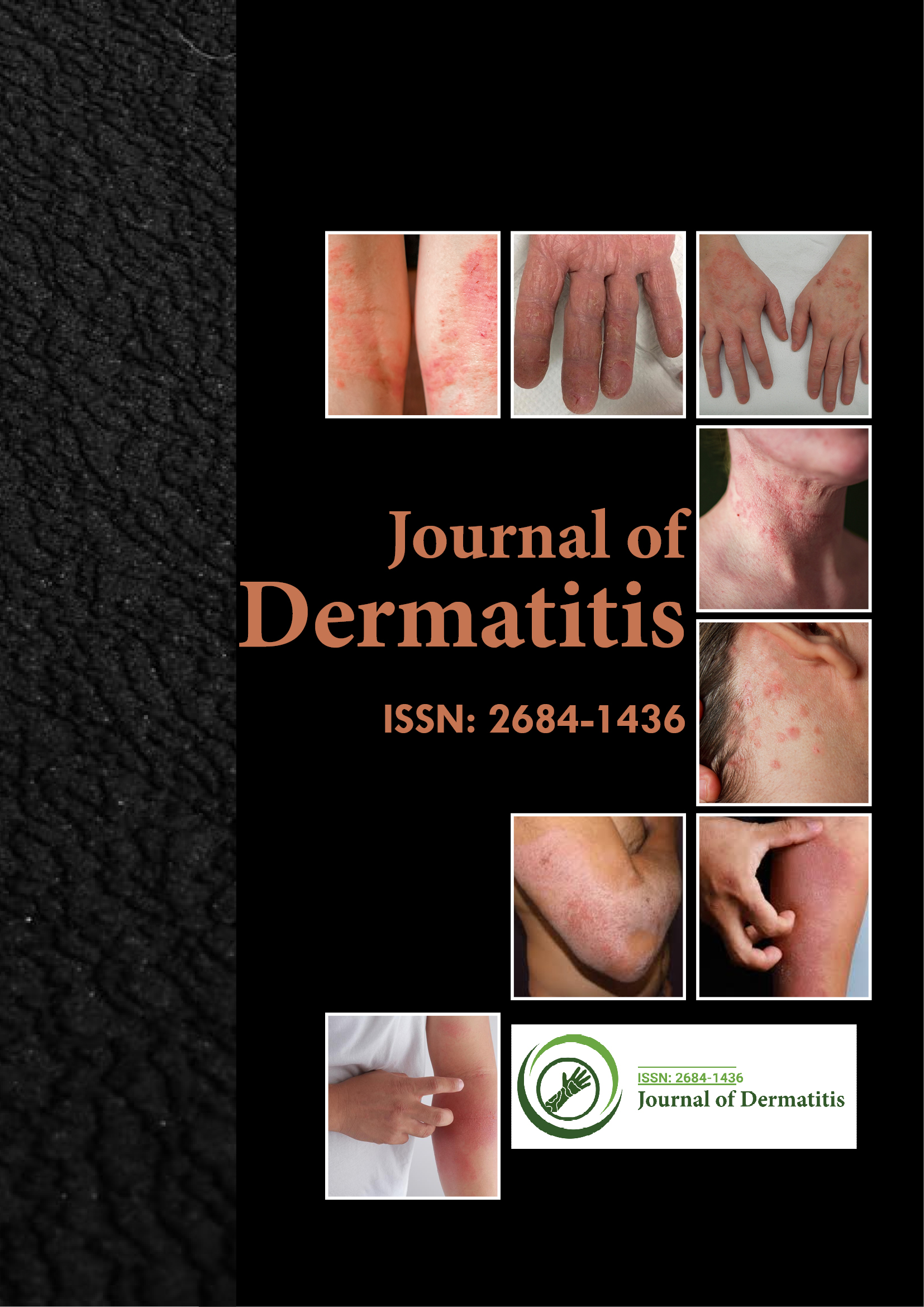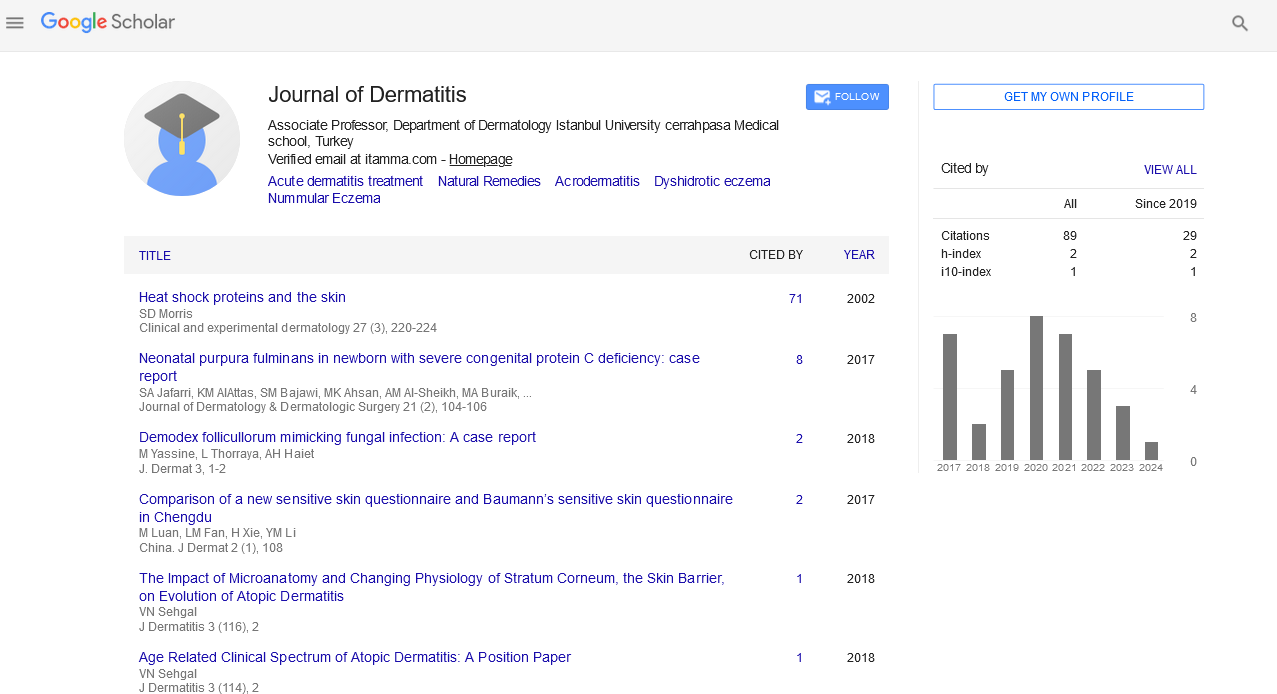Indexed In
- RefSeek
- Hamdard University
- EBSCO A-Z
- Euro Pub
- Google Scholar
Useful Links
Share This Page
Journal Flyer

Open Access Journals
- Agri and Aquaculture
- Biochemistry
- Bioinformatics & Systems Biology
- Business & Management
- Chemistry
- Clinical Sciences
- Engineering
- Food & Nutrition
- General Science
- Genetics & Molecular Biology
- Immunology & Microbiology
- Medical Sciences
- Neuroscience & Psychology
- Nursing & Health Care
- Pharmaceutical Sciences
Short Communication - (2022) Volume 7, Issue 6
Therapeutical Approaches to Acne Vulgaris in Teenagers and Adults
Agussalim Hatta*Received: 01-Nov-2022, Manuscript No. JOD-22-19076; Editor assigned: 04-Nov-2022, Pre QC No. JOD-22-19076 (PQ); Reviewed: 18-Nov-2022, QC No. JOD-22-19076; Revised: 25-Nov-2022, Manuscript No. JOD-22-19076 (R); Published: 02-Dec-2022, DOI: 10.35248/2684-1436.22.7.171
Description
In teenagers and adults, acne vulgaris affects the sebaceous glands often and manifests as inflammatory lesions on the skin. Acne and its uncontrolled proliferation are mostly caused by the anaerobic bacterium Cutibacterium acnes. Neutral lipids are hydrolyzed into free fatty acids by C. acnes, which encourage oxidative stress, inflammatory responses, and tissue damage. Under oxidative stress, sebum production, dead skin cells, and the potential for anaerobic conditions all rise in acne vulgaris [1]. Oxidative stress also weakens skin barriers, fosters the growth of C. acnes, and exacerbates inflammation, all of which contribute to the progression of acne. Additionally, C. acnes interact with a number of immune system elements. Additionally, Staphylococcus aureus, an aerobic bacterium, multiplies in acne lesions and promotes inflammatory skin conditions by secreting extracellular metabolites and enzymes.
Typically, medicines like Erythromycin (EM) and Benzoyl Peroxide (BP) are used to treat C. acnes. BP lowers the production of sebum and stops C. acnes from growing, but it might irritate the skin and make acne worse [2]. Some antibiotics help control the growth of C. acnes to lessen skin irritation, but they can also have a number of negative side effects, such as birth deformities, dry skin, and an increase in cholesterol [3]. Thus, it is still important to create new compounds that may be used as secure and efficient acne therapies.
The most well-known traditional Korean dish is kimchi, which is created with fermented fish sauce, pepper, garlic, ginger, and cabbage [4]. During the fermentation process for kimchi, lactic, citric, acetic, and succinic acids are created along with vitamins, minerals, dietary fibre, and other organic acids. In comparison to other fermented vegetable dishes, kimchi has a diversity of nutritional contents. Kimchi has anti-inflammatory, anti-obesity, probiotic, cholesterol-lowering, and anti-aging benefits as a result.
LAB like Lactobacillus, Leuconostoc, Pediococcus, and Weissella contribute to the production of the distinctive taste and flavour of Kimchi throughout the fermentation process. Heterofermentations like Weisella and Leuconostoc initially rise in the beginning and middle of the fermentation. After the fruit has reached its peak in the ripening process, homofermentation with Lactobacillus takes part in fermentation, and lactic acid levels rise quickly [5]. The habitat of Kimchi becomes increasingly acidic as lactic acid levels rise. This makes it feasible to control pathogenic and putrefactive microorganisms.
It is well known that Lactic Acid Bacteria (LAB) regulate microbial relationships and inflammatory responses in the host. Because they have a long history of being used safely, LAB have been isolated and chosen from fermented foods. Atopic dermatitis alleviation, anti-aging, and skin moisturization are just a few of the skin health activities that the Lactobacillus strain is said to support, according to numerous research [6]. Studies on the effectiveness of LAB for the treatment of acne have not yet been conducted. Additionally, previous research on the anti-acne effects of LAB has mostly concentrated on its antimicrobial action against bacteria that cause acne. Therefore, research on LAB's ability to block the aetiology of acne is required. In light of this, the effects of LAB on anti-bacterial activity and antiinflammatory activity were examined here as potential treatments for acne vulgaris.
REFERENCES
- Leyden JJ. Therapy for acne vulgaris. N Eng J Med. 1997;336(16):1156-1162.
- Conforti C, Guida S, Dianzani C, Turco P, Cazzato V, Zalaudek I et al. Carbon Peeling Laser Treatment to Improve Skin Texture, Pores and Acne Lesions: A Retrospective Study. Medicina. 2022;58(11):1668.
- Pathmarajah P, Peterknecht E, Cheung K, Elyoussfi S, Muralidharan V, Bewley A. Acne Vulgaris in Skin of Color: A Systematic Review of the Effectiveness and Tolerability of Current Treatments. J Clin Aesthet Dermatol. 2022;15(11):43-68.
- Alexis A, Woolery-Lloyd H, Andriessen A, Kang S, Rodriguez D, Callender V. Racial/Ethnic Variations in Acne: A Practical Algorithm for Treatment and Maintenance, Including Skincare Recommendations for Skin of Color Patients With Acne. J Drugs Dermatol. 2022;21(11):13223-13314.
- Rehan ST, Khan Z, Abbas S, Imran L, Munir S, Tahir MJ et al. Role of topical spironolactone in the treatment of acne: A systematic review of clinical trials—Does this therapy open a path towards favorable outcomes?. J Dermatol. 2022.
- Kao HJ, Balasubramaniam A, Chen CC, Huang CM. Extracellular electrons transferred from honey probiotic Bacillus circulans inhibits inflammatory acne vulgaris. Sci Rep. 2022;12(1):1-8.
Citation: Hatta A (2022) Therapeutical Approaches to Acne Vulgaris in Teenagers and Adults. J Dermatitis.7:171.
Copyright: © 2022 Hatta A. This is an open-access article distributed under the terms of the creative commons attribution license which permits unrestricted use, distribution and reproduction in any medium, provided the original author and source are credited.

